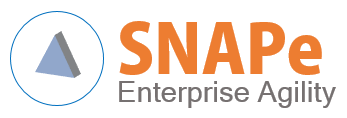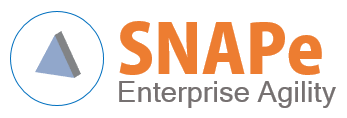Agile Game
We believe Agile can be fun when promoted through a game simulation, as advocated by SNAPe.
Our game could be effective to win business opportunities with your clients, and to understand their agile maturity on the ground.
- One-to-Many: Traditional assets , like a video or deck, support one-to-one relationship, which depends on individual’s availability. Our Game creates one-to-many relationship, and will support sales on multiple layers.
- Create Sponsors: Our Game is a collective event which engage with multiple stakeholders. Statistically (in a normal distribution) about 15% of the people will resist to change, and another 15% will always support it. The remaining 70% is neutral, and we’ve a chance to convert them in supporters, so that our message could be amplified from inside, after we leave the client.
- Container safe: The Game runs safely as a software in its container. It doesn’t affect the real environment, but it gives the Team a taste of how Agile could run in a real environment.
- Fail Fast: During a Game people can fail on a particular situation, but fear not. From failure we can learn how to tackle real problems. The game complete in 1hr, whereas learning from the real environment could be painful, and will take longer. No coding experience is required.
Playing a game will promote face to face communication (or remote F2F), and group aggregation. It will also help to build Trust, and support a ‘can do’ attitude. Our Game simulation may create a momentum for Teams involved in the Agile journey, and it's a one-to-many relationship, with the stakeholders. In other words, the chances to win a business opportunity increase with the number of players.
Our Game works on 4 levels: Setup, Learn, Play, and Reports.
• Setup: Once you login as an Admin, you can setup AGame for your players, and this usually take 5'.
• Learn: This is optional and allows you (the Admin, or Agile Coach) to make sure your players understand the basics of Agile and Scrum. In general, you may want to spend 10-15' to tell the participants how AGame works.
• Play: This is where the team play the game. It usually take 60', but can be extended. Each team need to answer some questions, and discuss few dependencies with other teams. The Admin can also inject changes mid-sprint to see how they respond.
• Reports: They are auto-generated and available at the end of the game. The Admin will discuss with the team the outcome of the game, and depending on the feedback , this may take from 30' to 2 hrs. This is probably the most interesting part where misconceptions are discussed and clarified.
• Single player: You can play at the same time, as Admin and as a Team member .
• 50 Participants : One license will cover about 7 People x7 Teams. This means that you engage with max 50 people per session.
200 players?
In Agile we suggest to form small teams, so you (the Admin) can interact with each individual while they play, and at the end of the game.
If you want to cover 200 people, you've 2 options:
• Simultaneously: you need to buy 200/50 = 4 licenses so you can onboard all participants at the same time. For example, you could finish the game in one week , providing you've 4 Admins available.
• Batches: you setup a 3mo plan, where you allocate the resources needed to play and attend the game.
• Winner: The winner is the Team who answered correctly all the questions , in the shortest amount of time.
• Communication: The answers that each team commit, are visible to all players in real-time. To communicate further with each other , if they're not co-located, they can connect remotely with any available application (MS Teams, Zoom)
Powerpoint vs playing a Game
A slideshow with animated effects might look nice but it's still a one-way presentation and it will hardly engage with the audience. For curious and inquisitive people trying is believing.
This is where agile games come handy. A game creates a safe and fun environment for simulating real-life processes driving creativity, and learning through hands-on experience.

